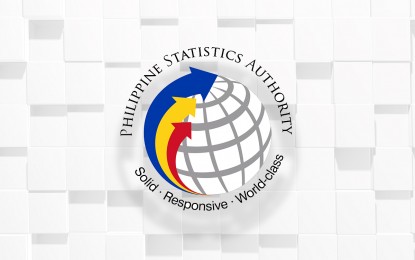
MANILA – The country's trade deficit widened by 26.3 percent in November last year, data from the Philippine Statistics Authority (PSA) showed.
Preliminary data released by the PSA on Wednesday showed that the balance of trade in goods, or the difference between the value of exports and imports, posted a USD4.6 billion deficit in November, higher than the USD3.7 billion recorded in November 2022.
Total export sales during the month amounted to USD6.13 million, down by 13.7 percent from the USD7.10 billion recorded a year earlier.
"The commodity group with the highest annual decrement in the value of exports in November 2023 was electronic products with USD1.13 billion. This was followed by coconut oil with an annual decline of USD26.76 million, and gold with an annual decrease of USD18.61 million," the PSA said.
By major trading partner, the United States was the country's top export destination, accounting for about 15.8 percent or USD970.22 million.
Other major export trading partners include Japan, People's Republic of China, Hongkong, and Republic of Korea.
The total value of imports, on the other hand, slightly went up to USD10.820 billion from USD10.817 billion in November 2022.
Transport equipment which went up by USD340.72 million, recorded the highest increase in the value of imported goods.
This was followed by metalliferous ores and metal scrap, which grew by USD146.03 million and miscellaneous manufactured articles with an annual increase of USD108.84 million.
"People’s Republic of China was the country’s largest supplier of imported goods valued at USD2.72 billion or 25.1 percent of the country’s total imports in November 2023," the PSA said.
Other major sources of imports include Indonesia, Japan, Korea, and the USA.
Rizal Commercial Banking Corporation chief economist Michael Ricafort said external trade remained relatively soft amid the softer global economic growth.
He said the high interest rates also increased borrowing costs which somewhat weighed on the demand for loans to finance imports and exports.
"Relatively higher prices also partly weighed on global trade and investments activities, both for new investments and expansion projects," he said.
Ricafort said in the coming months, the continued easing trend in headline inflation could help support the easing of borrowing costs and support the recovery in both exports and imports.
He noted, however, that the country's membership into the Regional Comprehensive Economic Partnership (RCEP), which is the world’s biggest free trade agreement, would help convince more investors to locate in the country as a production base and an access point to bigger export markets that could benefit Philippine exporters.
"The country's membership into RCEP would be one of the sources of economic growth and recovery especially after the Covid-19 pandemic," he said. (PNA)
